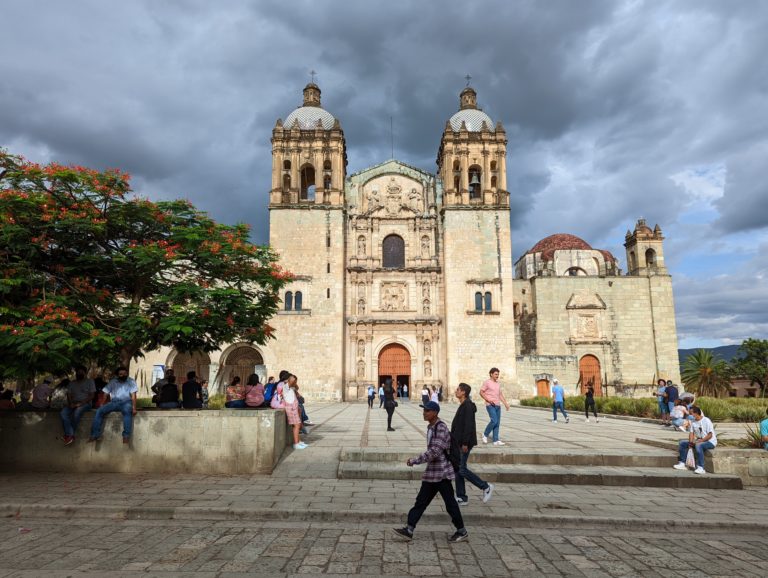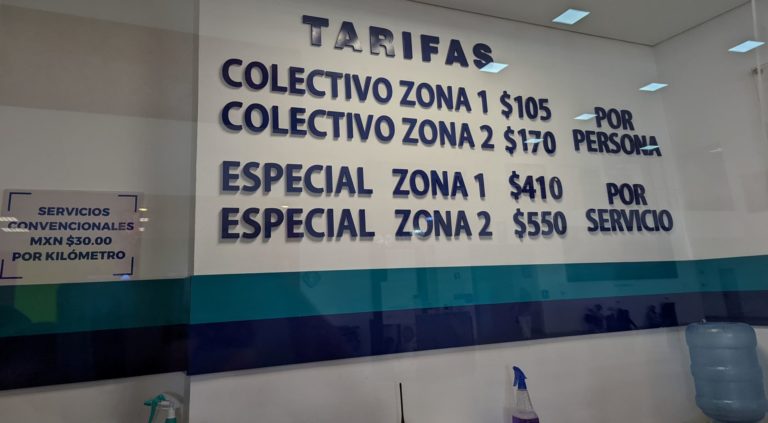Traveler’s Spanish (Mexico)
A friend is meeting me in Oaxaca de Juárez (Oaxaca City) soon, and I thought a list of the most useful words to know in Spanish for travelers to Mexico might be helpful.
Then I decided to publish it here, where other people might also make use of it!
There’s a lot of important notes about Spanish before you get to the list, but you can jump down to the list if you just want to start memorizing!
But first, you should probably download Google Translate. See why below.
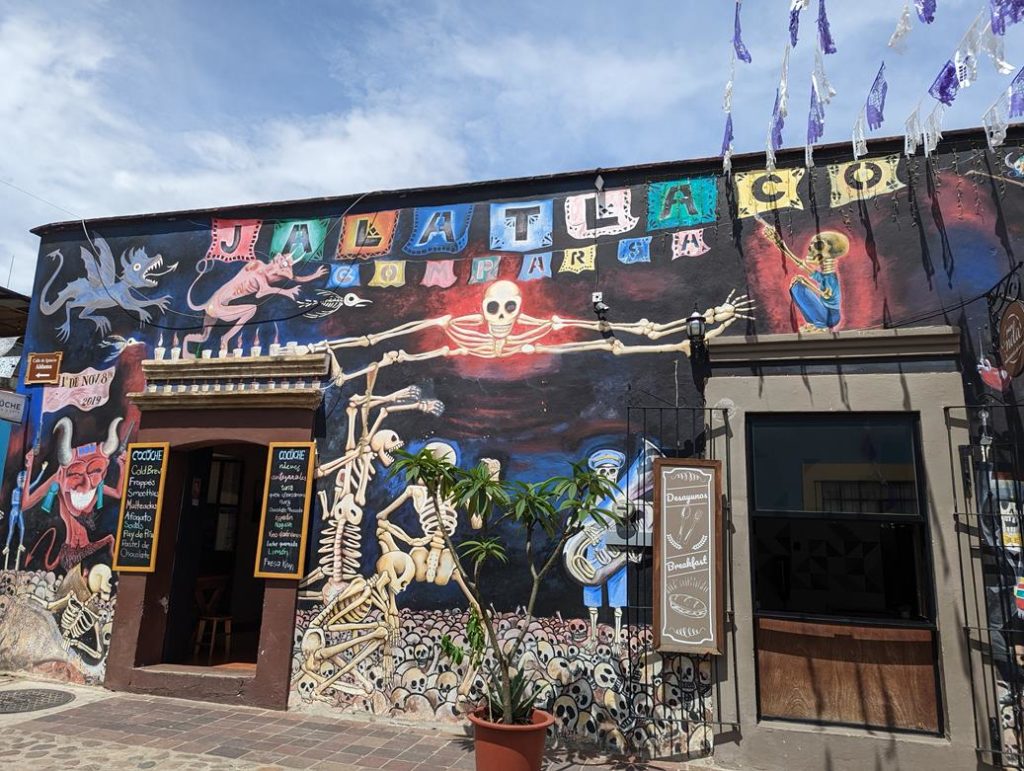
Notes About Spanish in Oaxaca
I studied both writing and Spanish in college, and it’s been a surprise to me how theory doesn’t always live up to application. But this is true even of English — such as how we’re taught not to begin sentences with conjunctions or end them with prepositions. Who really cares what word you end a sentence with?
See what I did there? 😏
Every Latin American country has a slightly different vocabulary from the rest, and this is also true inside of Mexico. It’s the same way that the American South has a slightly different way of speaking from other states in the USA, right, y’all?
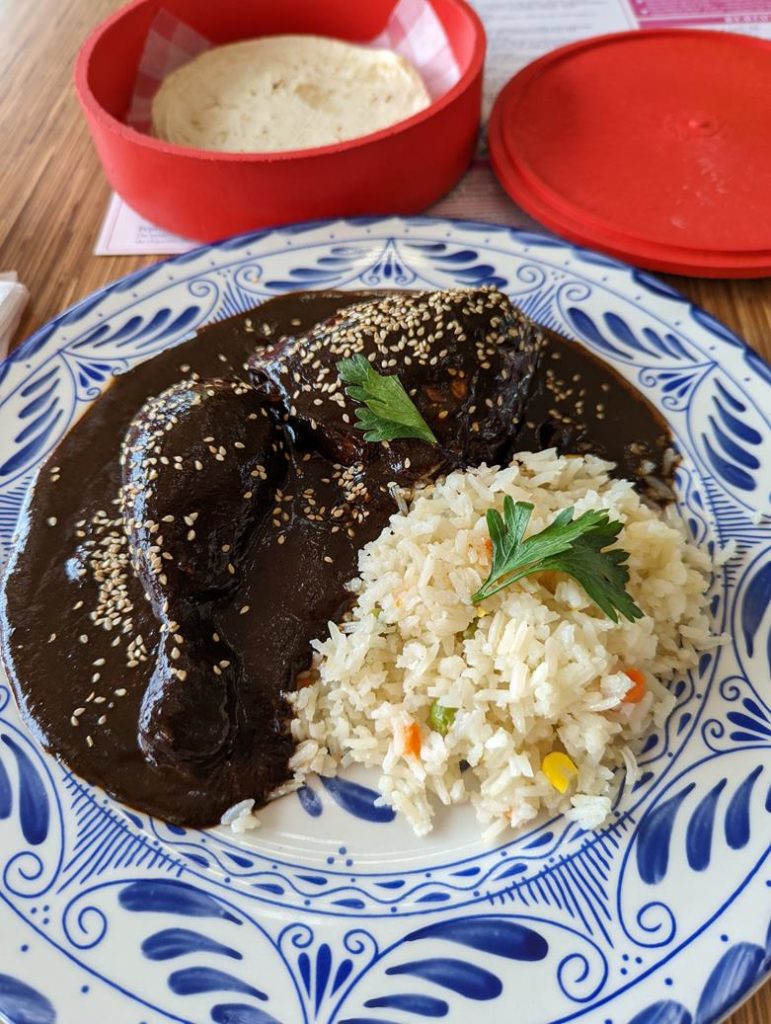
Words and phrases common in Oaxaca may not apply even to other parts of Mexico, let alone other Spanish-speaking countries.
The basic words will certainly be the same, but other phrases have been a surprise to me, such as asking “Where are you coming from?” instead of “Where are you from?”
One thing I’ve noticed across Latin American countries, though, is that most people appreciate it when you do your best to listen, understand, and converse with them in their own language.
Google Translate works ANYWHERE!
First, download Google Translate on your phone. You can hit your profile image at the top right and download Spanish so it’ll even translate while you’re offline. Then put your phone in airplane mode to be sure it’s working.
Familiarize yourself with the features of this app! It can be very useful in a pinch. The camera will let you translate menus on the fly.
‘Conversation’ will let you translate a conversation back and forth. I’ve never done this in real life, but when I tested it myself, it seemed to work really well.
When you look up a word, in Spanish or in English, you can then hit the speaker icon to have your phone pronounce it for you. Do this over and over and practice saying it to yourself. Maybe not while you’re around other people. 😅
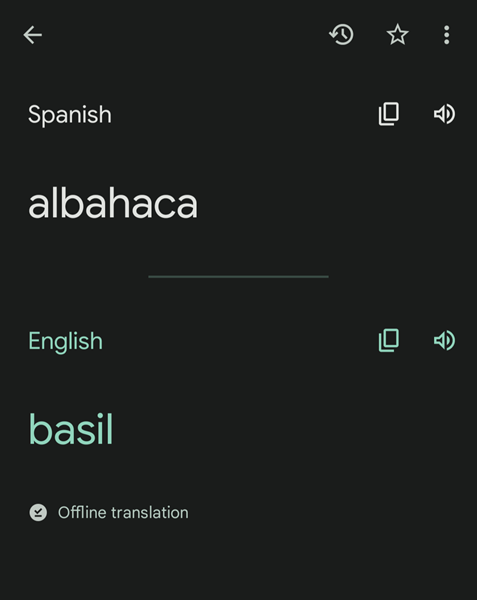
Quick Notes About Pronunciation
Use Google Translate to pronounce words for you so you can practice! (More on that above.)
- The Spanish j is pronounced like h in English.
- The Spanish h itself is always silent.
- The Spanish double L ll is pronounced like y in English (in Mexico, anyway).
- The z is pronounced the same as an s in Latin America. (Spain is weird.)
- In Spanish, qu is pronounced like k in English.
- Before o, a, u, the letter c sounds like k… and g is voiced like in go in English
- But before i and e, the letter c is pronounced like s in English. (Thus you get: Cinco)
- Also before i and e, the letter g is pronounced like h in English, or j in Spanish
- In Spanish, x is often pronounced like h in English, however… If the word comes from an indigenous language, x may be pronounced other ways, such as an s sound (like the Xochimilco neighborhood here in Oaxaca)
That’s why I suggest using Google Translate to pronounce words for you! Practice, practice, practice!
The accent on a word shows which syllable is stressed. (In Spanish, the accent symbol doesn’t change the sound of the letter. o and ó are both pronounced as ‘oh’ … but in a word with multiple syllables, the accent tells you where to place the emphasis.)
Traveler’s Spanish: Words to Know Before You Arrive
Repeat after Google Translate and say the words out loud to yourself so they feel familiar when you need to use them in real life.
Common Words
- yes – sí
- no – no
- please – por favor
- thank you – gracias
- help – ayuda
- help me – ayúdame
- I need – necesito
- what – qué
- where – dónde
- when – cuando
- who – quién
- how – cómo
- how much does it cost – cuanto cuesta
- where is – dónde está
- to go – ir
- to cross – cruzar
- excuse me (moving past someone) – con permiso
- excuse me (to get attention/help) – disculpe
- sorry (I messed up) – lo siento
- to buy – comprar
- you – tú
- I – yo
- me / my – mi
- the luggage – la maleta
- the backpack – la mochila
- a bag (always bring your own!) – una bolsa
- It’s mine – Es mio
- I can / can I? – Puedo
- water – agua
- drinking water – agua para tomar / agua potable
Common places
- bank – banco
- ATM – cajero automático
- bathroom – baño
- public restroom – sanitario publico (You’ll also see W.C. sometimes)
- a store – una tienda
The words between…
- and – y
- but – pero
- or – o
- in / on – en
- to / at – a
- for – para
- for – por (you can mix these up… most of the time, your meaning is still clear)
- of – de
- of the – del
Location words
Of course, it doesn’t help to ask “Where’s the bathroom,” only to have NO IDEA what they’re saying in response.
And most taxi or colectivo drivers DO NOT speak English.
- right here – aquí
- around here (in this area/room/store) – acá
- there – allá
- further over there – mas allá
- left – izquierda
- turn left – gira a la izquierda
- right – derecha
- turn right – gira a la derecha
- go ahead / straight – adelante
- further ahead – más adelante
- continue – continua
- near – cerca
- far – lejos
- very far – tan lejos
- next to – al lado
- around the corner – a la vuelta
- on/at the corner – en la esquina
- inside – dentro
- outside – afuera
- there is / is there / are there – hay
- there’s not, doesn’t exist – no hay
Questions asked of you & what to answer
- Where are you from – ¿De dónde vienes?
- The United States – Los Estados Unidos
- Ready to order? – ¿Listo para ordenar? / ¿Lista para ordenar?
- Who’s next – ¿Quién sigue?
- Do you want – Quieres
- I want – Quiero
- Anything to drink – ¿Algo para tomar?
- Anything to eat – ¿Algo para comer?
- Tea or coffee – té o café
- Mineral water (usually carbonated) – agua mineral
- Flat water – agua natural
- Anything else? – ¿Algo más?
- Nothing else – Nada más
- To go? – ¿Para llevar?
- With your permission (such as when taking plates away) – Con permiso
Numbers
I’m not going to list them all here… but if you type out the word into Google Translate, it will spell it out so you can see it. (If you type 20, it’ll put 20 on the Spanish side, but if you type “twenty” then it’ll put “veinte” so you can see it.)
Then have Google Translate pronounce it for you. Repeat them over and over so you learn them.
Because pesos are often in the hundreds, it’s important to practice big numbers, too. 🤑
And some of them, like five hundred, are irregular. So keep listening and practicing!
I haven’t encountered any taxi drivers that speak English, so numbers are useful. More info about pesos, taxis, and more coming soon to this blog…
Again, more tips on using Google Translate above.
Learning a new language is fun!
There’s a million more words I could suggest learning, such as buen provecho, but these should get you through the majority of situations.
Most of the time, learning a language is best done not through memorization but through actual application and use of the words.
So by traveling to Spanish-speaking countries, you’ll get a good bit of immersion, which will help boost your language learning.
There’s a lot more I could say about learning other languages, but for now, I’ll leave it at that.
